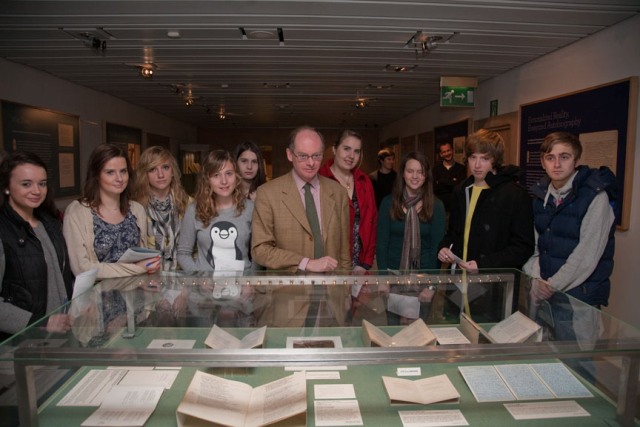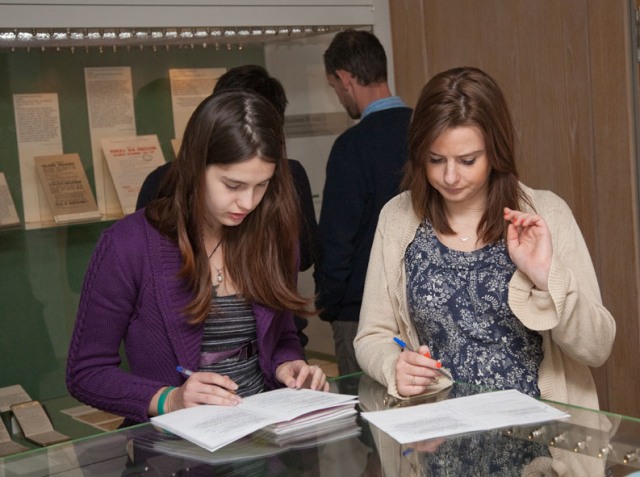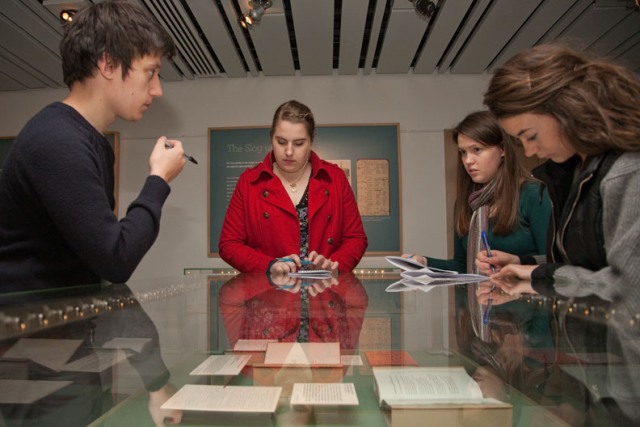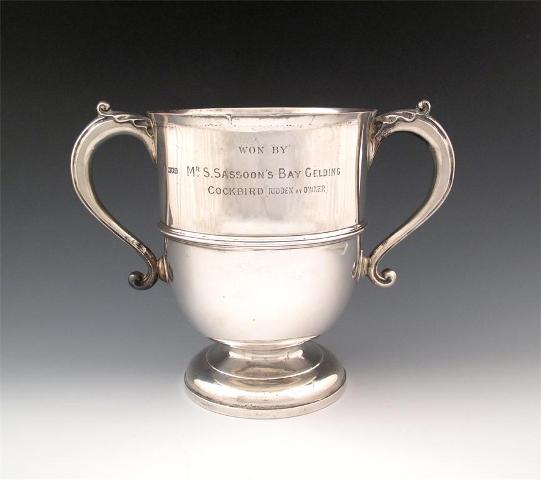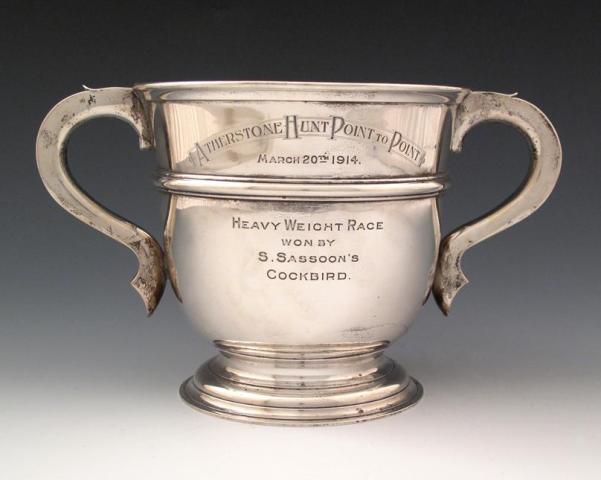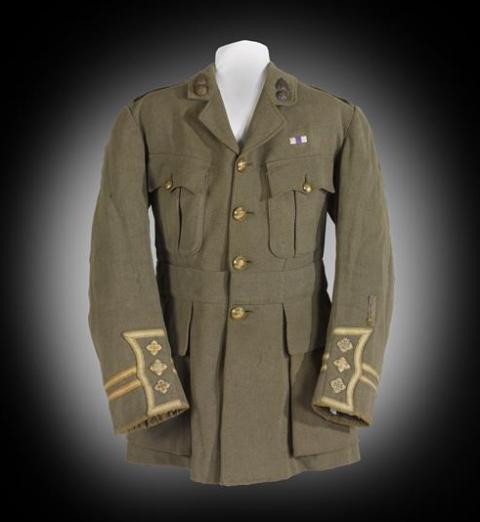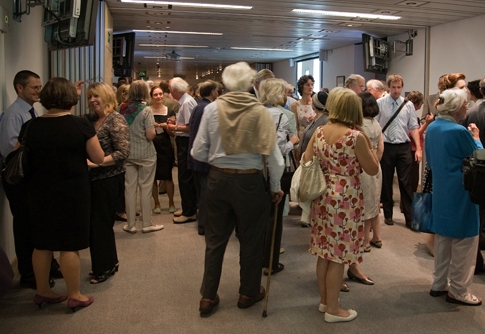The Bishop’s Stortford High School visits ‘Dream Voices’
A ‘guest post’ by Emily Dourish, the Library’s Joint Exhibitions Officer
Wednesday saw a successful event in the Library’s inaugural exhibition schools liaison programme. The Library is keen to engage with local schools and the Sassoon exhibition seemed a perfect place to begin this new initiative, as his life and work are studied as part of English Literature, History and Citizenship curricula.
As part of their A2 module on World War I literature, a group of Year 13 pupils from The Bishop’s Stortford High School made the journey to Cambridge to see the exhibition and prepare some work on selected poems displayed within it. They arrived with a good background knowledge, having spent the term reading Pat Barker’s novel Regeneration and Sassoon’s Memoirs of an Infantry Officer, and a selection of his poems, but were fascinated to see the ‘genuine article’ in the exhibition cases.
After a guided tour of the exhibition by the curator, they split into pairs, studying the exhibition materials to gain contextual information about the poems they had been assigned, before giving a new reading to the rest of the group along with an explanation of what they had discovered in the display. Several said they gained a whole new understanding of their poems by seeing, for example, Sassoon’s diary entries written around the time of the composition of Died of Wounds.
Overall the visit was considered a great success, both by the teachers with the group but more importantly by the students themselves who felt they had seen more of the man himself than their previous reading had been able to offer. They rounded off their trip by braving the elements on a walk to Grantchester, fuelled by the prospect not just of a visit to the Rupert Brooke Museum, but of course also of scones and tea.
